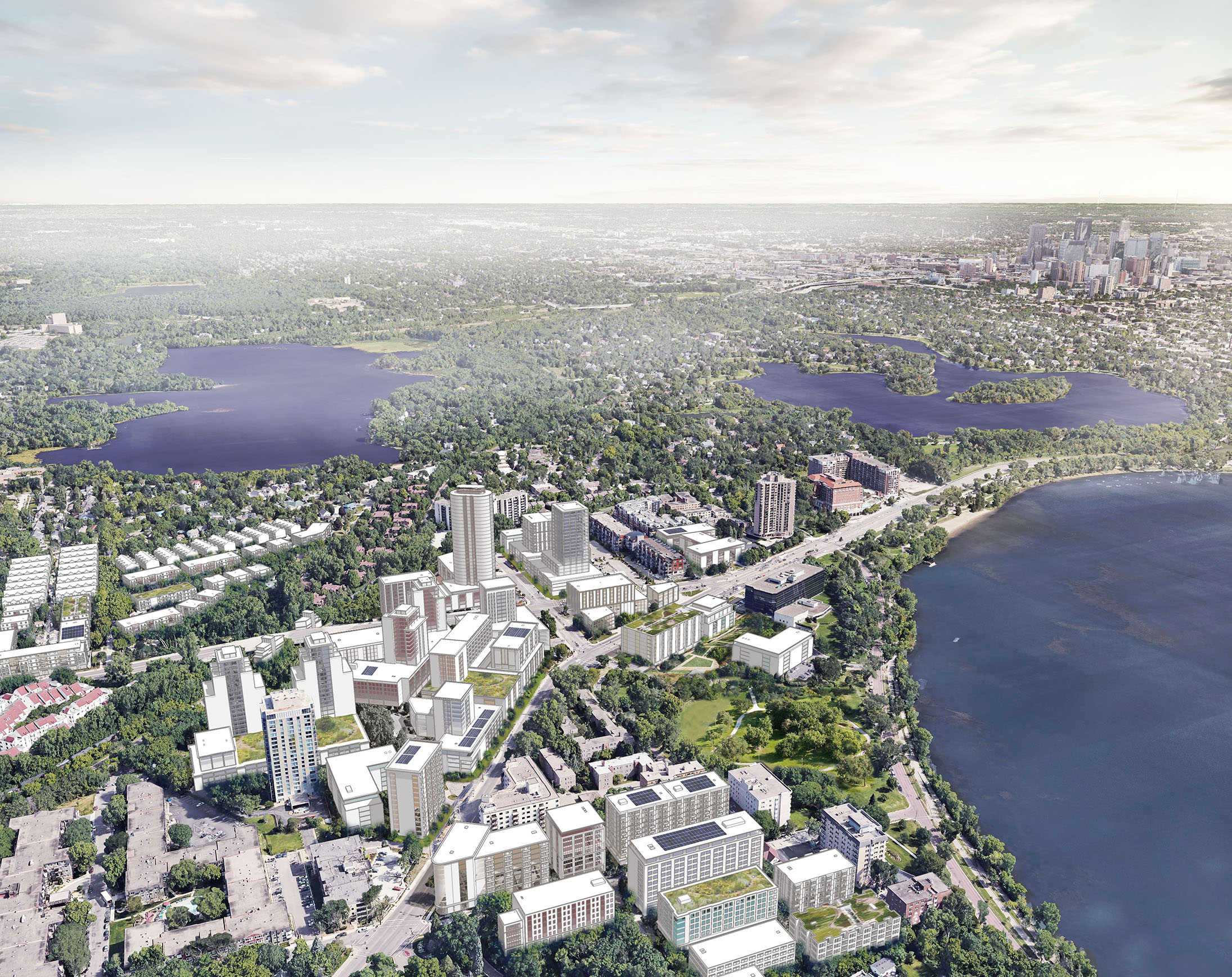Development Near METRO Stations: Support development and public realm improvements near existing and planned METRO stations that result in walkable districts for living, working, shopping, and recreating.

The system of existing and planned METRO Light Rail Transit and Bus Rapid Transit lines in our region presents substantial opportunities to develop new housing, employment, and commercial goods and services in a manner that allows people to conduct daily activities without using a car. This concept is often called Transit-Oriented Development. In Minneapolis, the existing development pattern is supportive of transit, and residents and workers are served by an extensive system of buses and trains. Collectively, the policies of this plan support Transit-Oriented Development, and ongoing improvements to the transit system, in all parts of the city. METRO stations, however, provide a level of amenity and service a step above the rest of the system. And in many cases, areas near existing and proposed METRO stations require special attention to achieve their full potential.
The METRO Blue Line, Blue Line extension, and Green Line extension run in highway and freight rail rights-of way for much of their extent. This results in a unique set of weaknesses, strengths, and constraints related to the physical environment of each station, every station area has a need for improvements in connectivity and place-making. With strategic investments, METRO station areas can become high-quality, walkable districts for living, working, shopping, and recreating for people of all ages and incomes.
 ACTION STEPS
ACTION STEPS
The City will seek to accomplish the following action steps to support development and public realm improvements near existing and planned METRO stations that result in walkable districts for living, working, shopping, and recreating.
- Allow and encourage a dense mix of housing, employment, and commercial goods and services near METRO stations.
- Develop affordable housing near METRO stations.
- Require a minimum level of development near METRO stations to ensure that land is used efficiently near major transit investments.
- Ensure that METRO stations are accessible via sidewalks and bicycle facilities including those with mobility challenges.
- Identify and implement strategic investments to increase connectivity and support development.
- Break up large blocks into small, walkable blocks.
- Orient buildings to the sidewalk.
- Focus active uses on the ground floor of buildings along main pedestrian routes leading to and facing METRO stations.
- Incorporate plazas and open spaces into development and station design.
- Minimize the impact of automobiles near METRO stations by locating parking behind and under buildings, by sharing parking among area uses, by prohibiting the establishment of auto-oriented uses, and by prohibiting the establishment of stand-alone dedicated park-and-ride facilities.
- Make strategic investments around individual stations that create safe high-quality, walkable districts for living, working, shopping, and recreating for people of all ages and incomes.
- Allow space for connecting bus routes, bike-share and other first-last mile infrastructure near METRO station in the city rights-of-way, coordinating with development whenever possible.

